Wholefoods are a buzz word right now, but in her new book, Wholefoods from the Ground Up, long-time wholefood chef Jude Blereau presents an uncomplicated and delicious array of recipes to tempt all tastebuds. Here we chat to Jude about her approach to food and share three recipes from the book.
Q&A with Jude Blereau
How did you first start cooking with wholefoods?
In reality, I think this is what I have been doing all my life. But, my serious interest in food started in the mid-80s when I was studying nutrition part-time. When I went to the US in 1986 I came across a book called Food and Healing by Anne Marie Colbin and this changed my life. My early experiences with wholefoods were very hit and miss (think rock hard cakes!)
How do you describe your wholefood approach?
I describe my wholefood approach as eating real food and cooking from. This means I use ingredients that not only are delicious, but will nourish. Oil is a good example. I may make a carrot cake, but I will use an unrefined extra virgin, fruity olive oil because it is heat stable, and not refined. In that cake I would also use an unrefined sugar such as rapadura to sweeten, as this sugar has all the minerals and vitamins still in it.
What do you suggest to someone wanting to make a change towards adding more wholefoods to their diet?
To begin with, I would say form a relationship with the person who grows your food as much as is possible. Know how they grow it and ask questions. Eat seasonally. Cook from scratch. Truly, making your own muffin from white flour, white sugar, egg and butter is far better than many that are available for sale. If you are buying a prepared product, understand the ingredients – there should be no numbers or colours. Buy traditional fats such as butter, lard, olive oil and sometimes for baking if needed, macadamia oil. Look to how our grandparents ate. Take it one step at a time – learn one thing well and then move onto the next one. Then, begin to go further and start using less refined foods such as semi refined flours, brown rice rather than white, whole oats rather than rolled oats and rapadura sugar rather than refined white sugar.
What are the key benefits of wholefoods as we get older?
Along with ensuring that you look after your stress load, if we want our body to function well, it must have the nutrients to do so. I would say as we get older and our digestion alters a little, bone stock to aid digestion is essential. But also, prepare and cook foods appropriately so they are optimally digestible. For example grains and legumes will need to be soaked, and well cooked. Eat in balance and moderation. Understand the digestive system is best at midday. Continue to look after your gut ecology with small amounts of cultured foods. When we eat real food, we will get all the nutrients that help our body to thrive.
What do you most enjoy cooking?
Oh, I am a baking girl. I love pastry especially. But, I also get enormous pleasure from making savoury meals, knowing they will nourish me and those I love at breakfast, lunch and dinner. I love having a pot of soup also on the stove – always a handy lunch or dinner. I also think that as we age, and perhaps then live alone, we sometimes don’t bother to cook for ourselves – this is not a nourishing act, we must love ourselves and nourish ourselves too. My mum at 96 still cooks for others and herself, and I think this is an incredibly loving act towards herself and a key reason why she is still so well.
Sweet potato, cinnamon bread
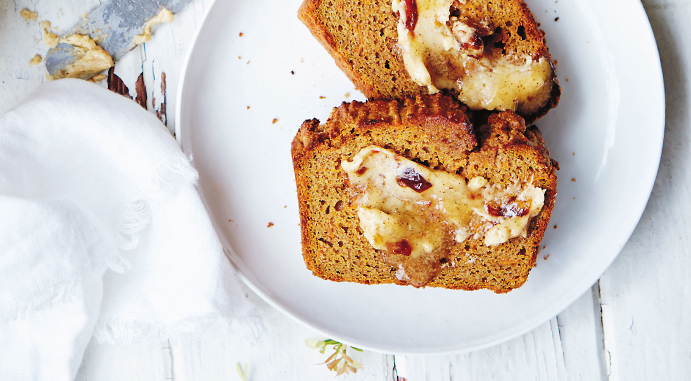
An exceptionally easy and delicious bread, this will keep for some time and it toasts brilliantly even if a couple of days old. It also freezes well. Makes 12 slices.
- 160 g (5½ oz/1 cup) brown rice flour
- 70 g (2½ oz/½ cup) teff flour
- 30 g (1 oz/¼ cup) chickpea flour (besan)
- 1 tablespoon rapadura sugar or raw sugar
- 2 teaspoons baking powder
- 1 teaspoon ground cinnamon
- 2 eggs
- 80 ml (2½ fl oz/? cup) Cultured Buttermilk (page 50) or plain natural yoghurt
- 2 tablespoons full-cream (whole), non-pasteurised milk
- 250 g (9 oz/1 cup) mashed sweet potato, cooled
- 100 g (3½ oz) cold unsalted butter, cut into small pieces
- pinch of sea salt
Preheat the oven to 180?C (350°F) and generously butter a loaf (bar) tin (see Kitchen Note).
Place the flours, sugar, baking powder and cinnamon in a bowl. Mix through with a whisk to combine the ingredients and break up any lumps of flour.
Place the eggs, buttermilk and milk in a small bowl and whisk to combine well, then add the mashed sweet potato and mix until well combined.
Using your fingers or a pastry cutter, cut the butter into the flour until the mixture resembles coarse breadcrumbs – some bits should be the size of a pea. Add the wet mixture and stir through until just combined. Spoon into the prepared tin and bake for 40–45 minutes, until a skewer inserted into the middle comes out clean. Leave to cool for 15 minutes before turning out onto a wire rack to cool completely.
To store, wrap in a piece of foil lined with baking paper and store in a cool dark place for up to 5 days. To freeze, slice and store in a sealed container.
Kitchen Note
This is best made in a loaf tin that is narrower rather than wider; providing less surface area for the bread to hold together once cut.
Barley, rainbow chard and lemon risotto
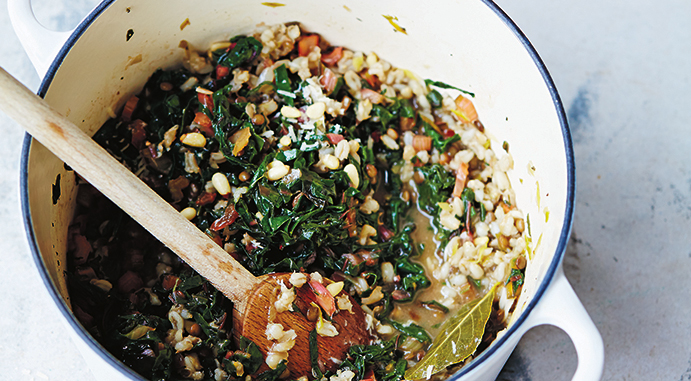
You can make this with vegetable stock, however a bone stock, such as chicken, will make the dish far more nourishing and delicious. Begin this recipe the day before. Serves 4-6.
- 100 g (3½ oz/½ cup) pearl barley
- 2 tablespoons green lentils
- 3 teaspoons whey or choice of acid or dairy-free options (page 59)
- 2 tablespoons extra virgin olive oil, plus extra for drizzling
- 1 medium leek, whites thinly sliced and rinsed (reserve the green tops for stock) (or 1 onion, finely chopped)
- 3–4 garlic cloves, finely chopped
- 2 teaspoons finely chopped rosemary
- 2 cm (¾ in) piece kombu
- 2 bay leaves
- 500 ml (17 fl oz/2 cups) chicken or vegetable stock
- 1 teaspoon ghee (or extra virgin olive oil, if vegan)
- 12 small–medium rainbow chardor silverbeet (Swiss chard) leaves (about 160 g/5¾ oz), well rinsed, leaves and tender stems cut into wide strips
- sea salt and freshly ground blackpepper, to taste
- 1–2 tablespoons lemon juice
- 25–50 g (1–13?4 oz/¼–½ cup) gratedparmesan or pecorino cheese
- 40 g (1½ oz/¼ cup) toasted pine nuts
The night before, place the barley and lentils in separate bowls and add enough water to cover by 2 cm (¾ in). Stir 2 teaspoons whey into the barley and 1 teaspoon into the lentils. Set aside at room temperature for at least 8 hours or overnight.
The next day, make the risotto. Place the olive oil, leek, garlic and rosemary in a heavy-based 20 cm (8 in) cast-iron pan. Cook over low heat, stirring occasionally for 10 minutes, until translucent.
Drain the barley and lentils, then add to the pan with the kombu and bay leaves, and stir through. Add the stock and bring to a simmer, then cover and cook over low heat for 40–50 minutes, until the barley and lentils are cooked and tender to the bite; there should still be plenty of liquid left.
Next, heat the ghee in a medium-size frying pan over low heat. Add the chard stems and cook gently, stirring occasionally for 10 minutes. Toss in the leaves and cook for another 10 minutes, until they are well wilted. Increase the heat to reduce the liquid.
When the barley and lentils are ready, stir in the chard and simmer, uncovered, for 5 minutes or until most of the liquid has evaporated. The barley will continue to absorb liquid as it sits. If it looks a little dry, add a little more stock or water to loosen. Season generously with sea salt and pepper (this is a dish that loves pepper), then stir in the lemon juice and parmesan cheese to taste. Scatter with the pine nuts, then drizzle with a little extra virgin olive oil and serve.
Rosemary, olive oil and lemon teacake
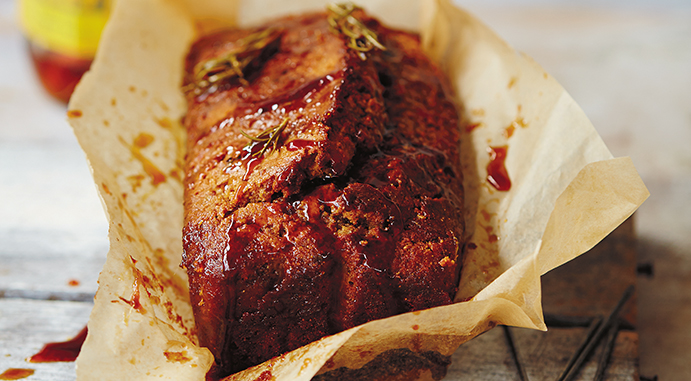
This teacake is delicious and rustic. It is best enjoyed in cooler weather and thanks to the syrup, keeps exceptionally moist. Serves 8-10.
- 130 g (4½ oz/1 cup) white spelt flour
- 110 g (3¾ oz/1 cup) barley flour
- 1½ teaspoons baking powder
- 1 tablespoon finely chopped fresh rosemary
- finely grated zest of 1 medium–large lemon
- 115 g (4 oz/¾ cup) rapadura sugar or raw sugar
- sea salt and freshly ground black pepper
- 3 eggs
- 1 teaspoon natural vanilla extract
- 185 ml (6 fl oz/¾ cup) extra virgin olive oil
- 185 ml (6 fl oz/¾ cup) Cultured Buttermilk (page 50)
LEMON SYRUP
- 185 ml (6 fl oz/¾ cup) strained lemon juice
- 75 g (2½ oz/½ cup) rapadura sugar or 70 g (2½ oz/? cup) raw sugar, plus extra as needed
- 4–5 rosemary sprigs, about 2–3 cm (¾–1¼ in) long
Preheat the oven to 180°C (350°F). Lightly grease and line a 1 litre (35 fl oz/4 cup) capacity loaf (bar) tin with baking paper. Don’t cut the corners of the baking paper to fit – fold them instead. This will allow you to pour the lemon syrup onto the cake when it is cooked without it seeping onto the tin.
Place the flours, baking powder, rosemary, lemon zest, sugar, a few grinds of pepper and a pinch of salt in a mixing bowl and whisk together to evenly distribute the ingredients.
Place the eggs, vanilla, olive oil and buttermilk in another bowl and whisk together. Add the wet mix to the dry mix and stir gently to combine. Transfer to the lined tin and bake for 60–70 minutes or until a skewer inserted into the middle of the cake comes out clean.
About 10 minutes before the cake is ready, start making the lemon syrup. Place the lemon juice, rapadura sugar and the rosemary sprigs in a small saucepan. Bring to the boil and simmer for 5 minutes, then taste and add extra sweetness as desired (see Kitchen Note). Continue to simmer until it has reduced by one-third and has a syrupy consistency.
Remove the cake from the oven and, while still hot, use a cake skewer to pierce the cake right to the bottom in 12 places. Pour the hot syrup over the top, making sure it flows into any cracks. Leave to cool briefly before serving. Store for up to 4 days in an airtight container, in a cool dark place.
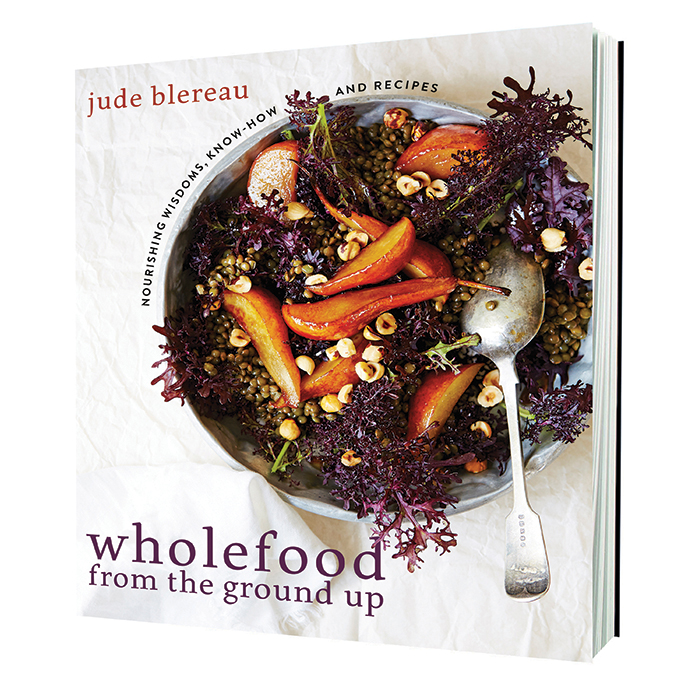 Recipes and images from Wholefood from the Ground Up by Jude Blereau (Murdoch Books) $39.99 available now in all good bookstores and online.
Recipes and images from Wholefood from the Ground Up by Jude Blereau (Murdoch Books) $39.99 available now in all good bookstores and online.










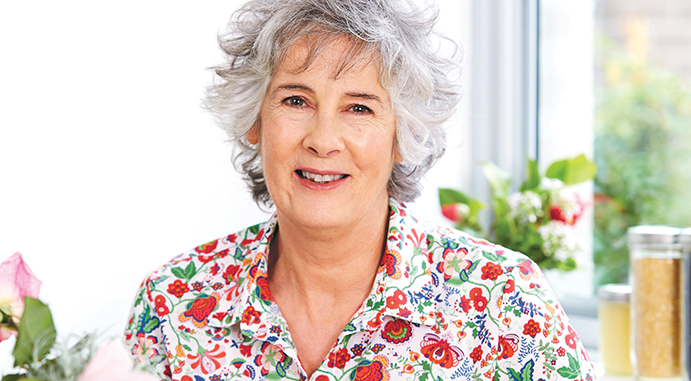












Add Comment